Canal du Nord
As mentioned, the Ruyaulcourt tunnel (4350m or 2.7 miles long) is the newest in France to be opened – however its early origins of construction in the early 20th century before WWI, this part of France basically being the Somme, where some of the worst battles of that conflict took place, meaning a fair amount of the canal was bombed. The Canal du Nord’s tunnels were reworked in the 1960s with the aid of a contractor’s railway system.
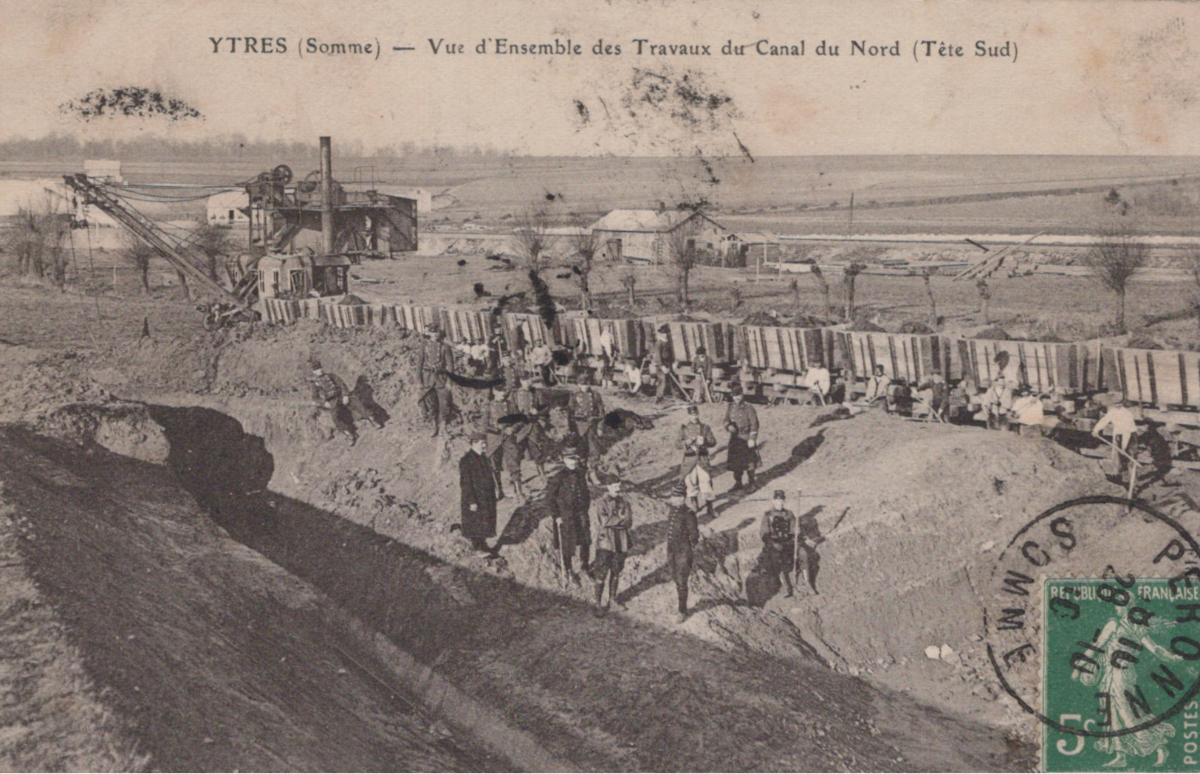
I think this is the start of the approach cutting to the Ruyaulcourt tunnel. Inventaire Hauts de France.
The rebuild of the Ruyaulcourt tunnel in the 1960s certainly also entailed the use of a contractors railway yet again – to what extent that would have been isn’t known, but its clear one was being used at the portals. Its quite possible the middle section that was doubled in size was facilitated also by a contractors railway.
Panneterie (1069m) is another that was built using a railway.

The construction of the Panneterie tunnel entailed the use of a railway in its construction as seen here. Inventaire Hauts de France.
Marne-Rhine canal
The first we look at is Arzviller – usually best known for its inclined plane. The location is some distance west of Strasbourg. The tunnel is about 3.50km (2.15 miles) above the inclined plane. There is a short section of open air canal (about 800m) beyond before the canal plunges into its next tunnel at Niderviller. At one time there was a narrow gauge railway that ran between the extremities of the two tunnels and the short open air section and this was used for hauling barges through the two tunnels.
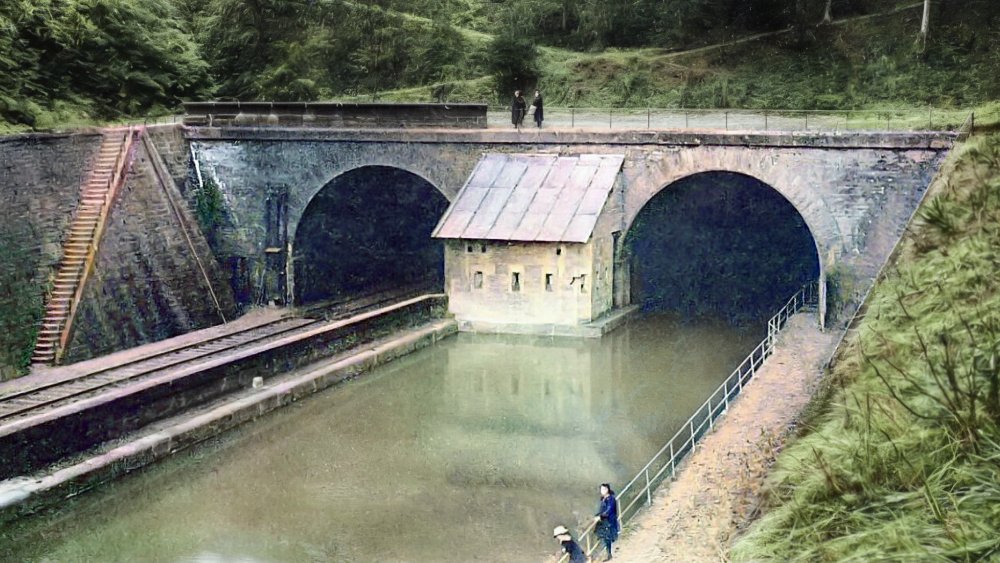
Arzviller railway and canal tunnels in the late 19th Century – before the narrow gauge haulage systems were built. Image from Ebay and upscaled/colourised by the author.

Modern view of the western portal of Arzviller tunnel with the SNCF main line tunnel at left. The canal tunnel’s very own railway can be seen upon the towing path. The tracks have been disused for decades. Wikipedia.
Plein soleil de fin de journée d'été pour la sortie à contre-sens (en Alsace Moselle) du =>#tunneldArzviller pour ce Mulhouse – Lille tracté une =>#BB15000 en 07-84. Les 2 tunnels parallèles ferroviaire et fluvial atteignent 2.500 m.
— EC (@CheminsdeFerTC) April 17, 2025
📷non identifié, source : Ferrovissime n°61. pic.twitter.com/9GPm9xjENN
Nice pic of a SNCF BB1500 at Arzviller! Twitter/X.
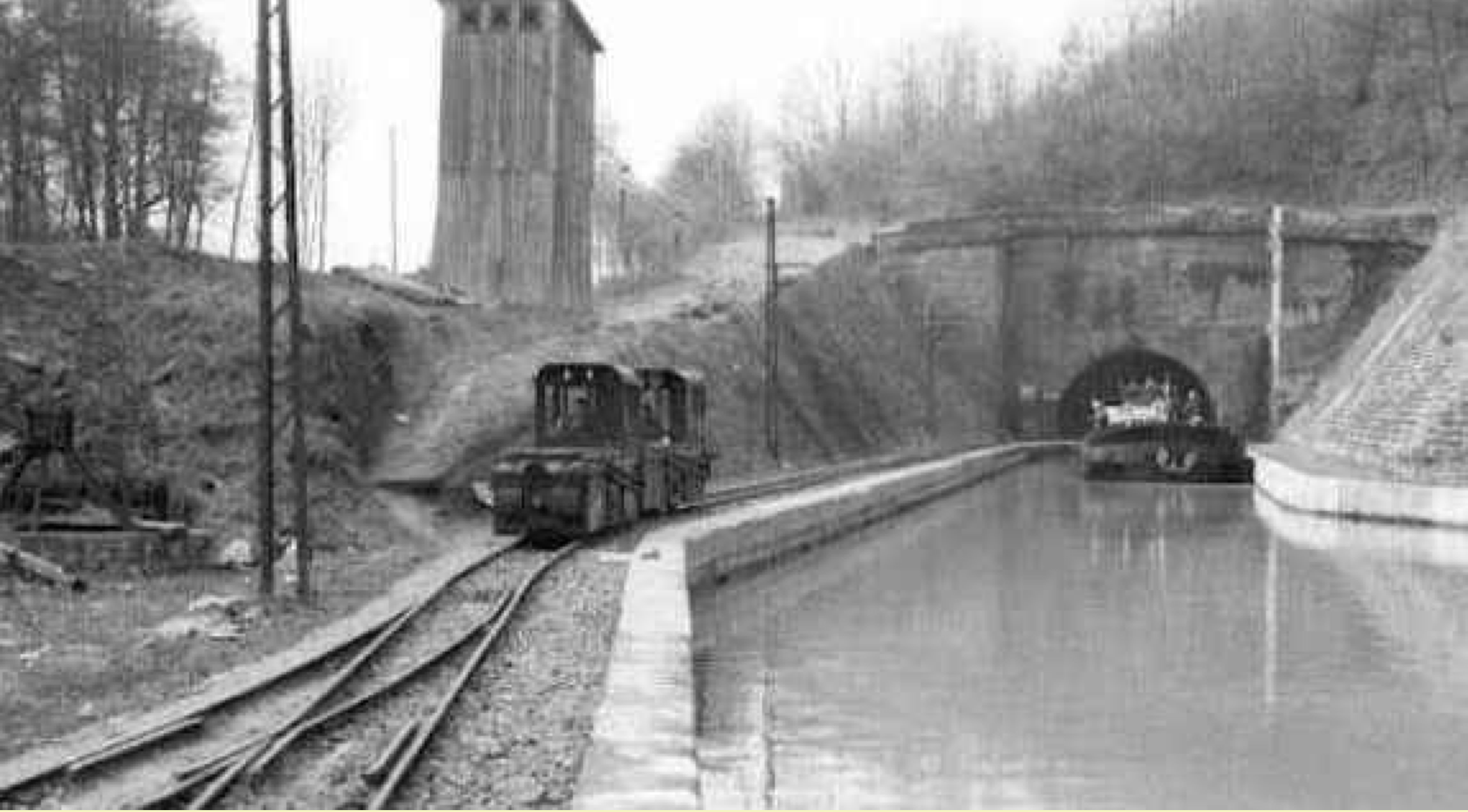
The towing locomotives at the eastern portal of Arzviller tunnel. Binnenvaart in Beeld.
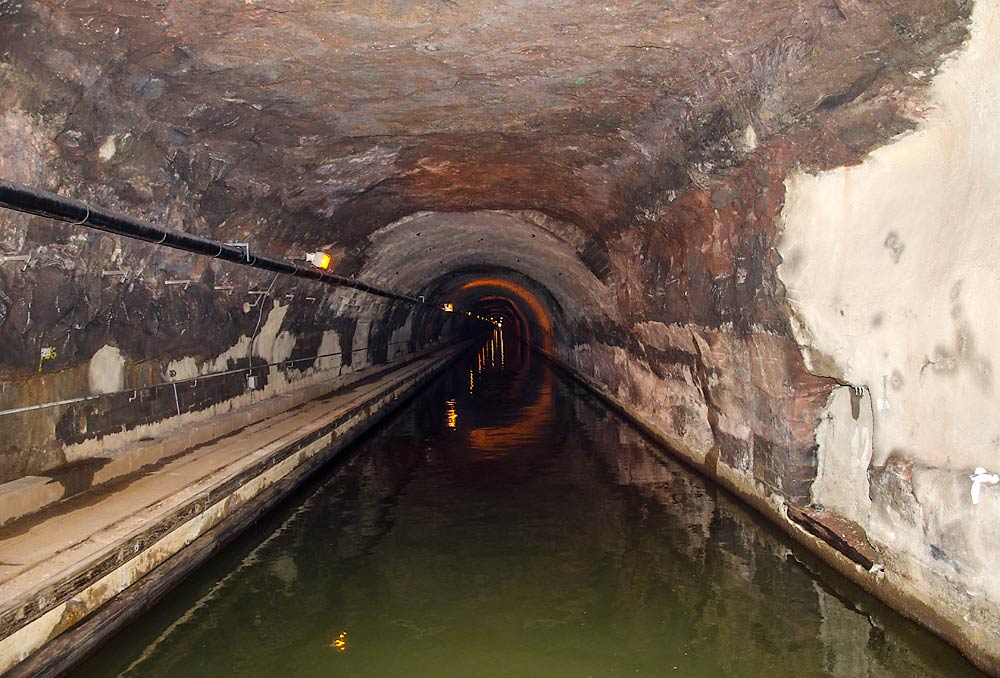
Inside the 2307m long tunnel. The rails of the former haulage system can be seen in the towpath. Bill Maloney Vacations.
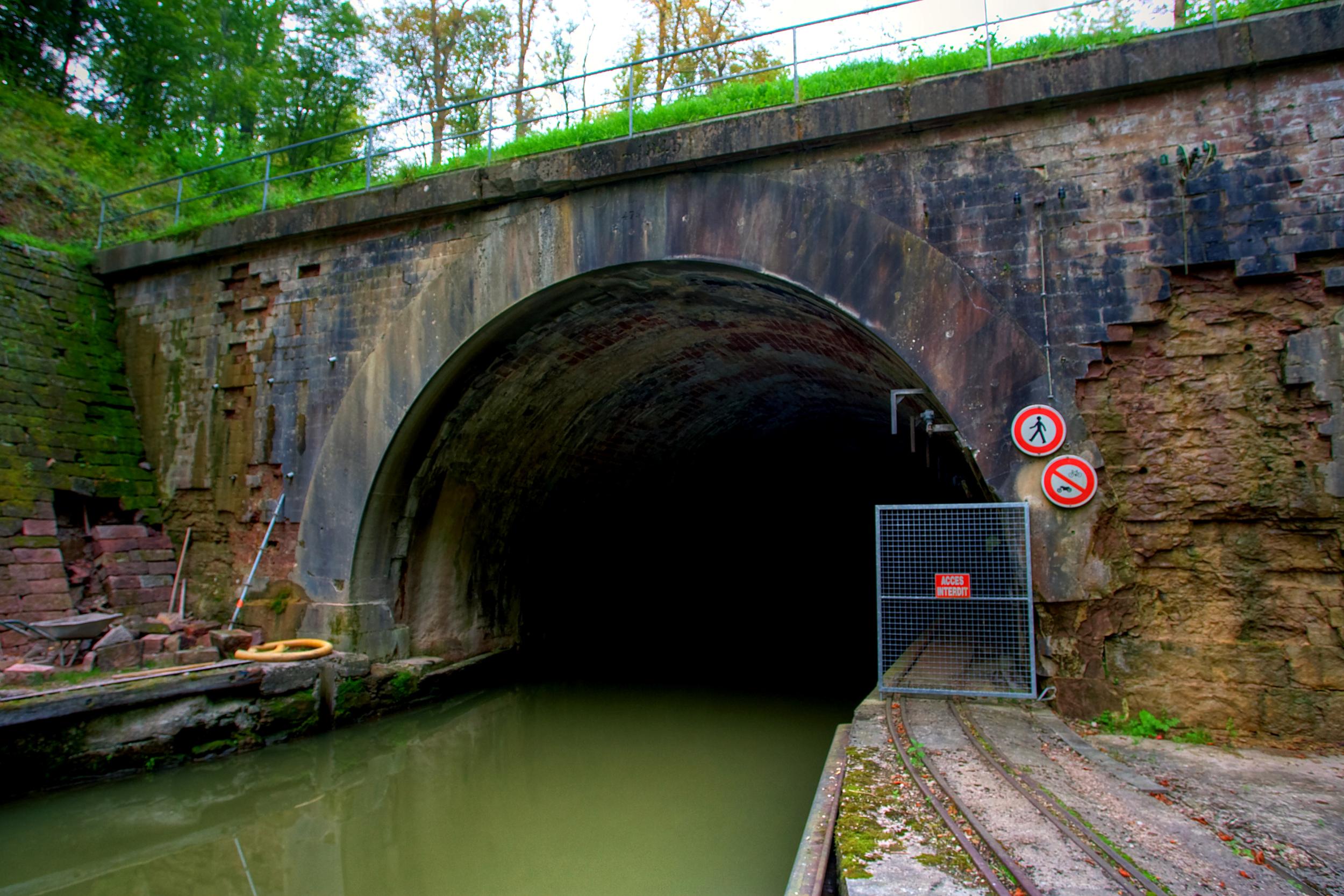
The west portal to Niderviller tunnel showing the narrow gauge railway that once hauled barges. Binnenvaart in Beeld.
Canals in other countries certainly used railways in tunnels too but specifically for the purposes of hauling peniches. In France at least two tunnels on the Marne-Rhine canal employed locomotives to haul boats. These were the Arzviller (2306m) and Niderviller (475m) tunnels and the transit through the two tunnels was taken in one go. The Marne-Rhine canal was built by the same company whose railway parallels the waterway thus there’s no doubt the canal itself benefitted from the use of railways in its construction. Not only that narrow gauge railways were also used on other sections of the Marne-Rhine Canal to haul barges and it was quite a substantial system.
Certainly the use of the tunnels from a later date for a narrow gauge system of locomotives hauling the boats was a further step in the canal’s development (as opposed to the more common use of electric canal tugs at say, the Riqueval tunnel in France or Harecastle in the UK).
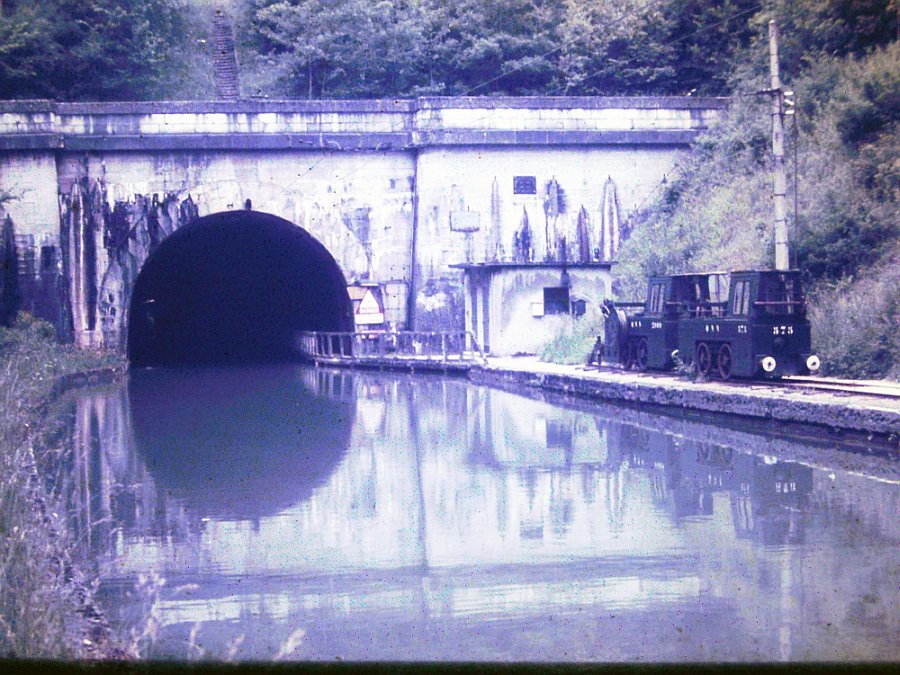
The Mauvages tunnel (3 miles or 4877m in length and built 1841-46) on the Marne-Rhine Canal in 1976. Barges were towed through the tunnel by a chain driven tug. They were however towed onward from the tunnel by way of these narrow gauge locomotives operated by the Compagnie Générale de Traction sur les voies Navigables (General waterway traction company)! Clearly the towpath in the tunnel was too narrow to furnish rail haulage thus this hybrid system existed. Facebook.
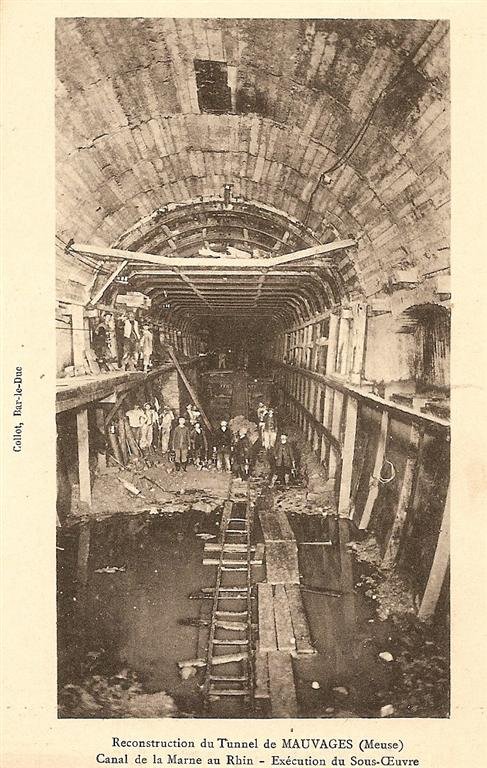
Like a few other canal tunnels, the Mauvages tunnel too has had its share of problems. Despite not being built with the aid of a railway, one was later utilised in the work to undertake major repairs to the structure – including strengthening its arch. Bord à Bord Fluvial.
Even though the tracks still exist at a number of these French canal tunnels, the operation of locomotive haulage ended many decades ago. International Steam has a good amount of information and photographs of the now disused rolling stock used on the ‘Traction de l’Est’ lines as some of the the canal’s narrow gauge railway system was known. The Chemin de fer Chanteraines website has some good pictures of the locomotives in operation on the Marne-Rhine canal tunnel railways.
The main image is Arzviller tunnel with its rusty tracks set in the towpath. These were once used for the electric locomotives that hauled barges through. The image is from Binnenvaart in Beeld.
The next instalment in the series continues a look at France’s canal tunnels with a special on Rove. Today (25th April) is the 98th anniversary of that particular tunnel’s opening – it had been hoped to publish this instead a brief mention will suffice for the anniversary of the world’s longest canal tunnel.

Colourised detail from part of an invite to join President Doumergue for the tunnel’s opening 1927.
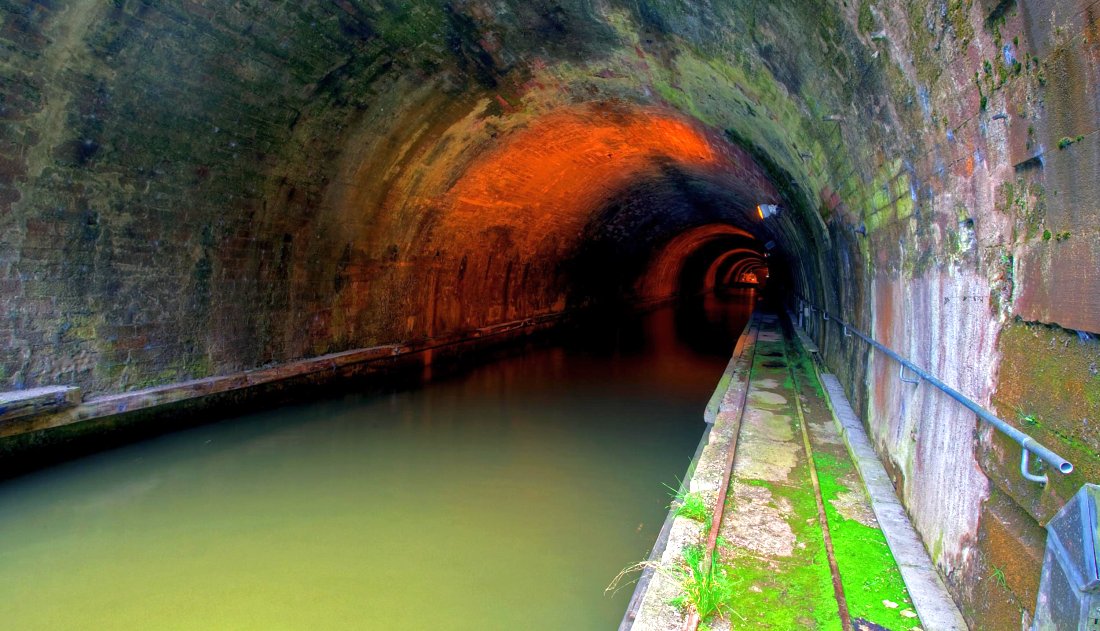
Leave a Reply